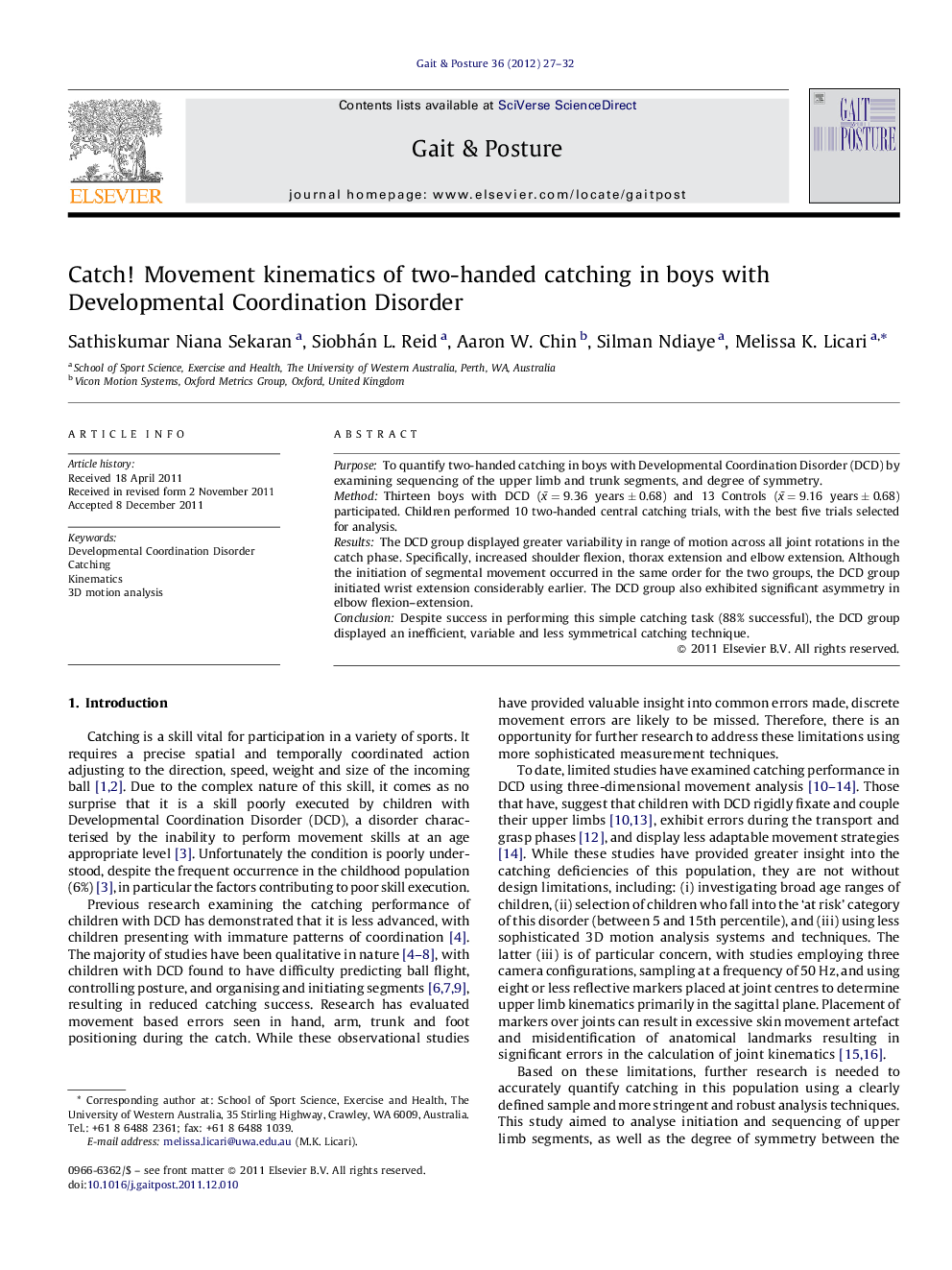| Article ID | Journal | Published Year | Pages | File Type |
|---|---|---|---|---|
| 6207419 | Gait & Posture | 2012 | 6 Pages |
PurposeTo quantify two-handed catching in boys with Developmental Coordination Disorder (DCD) by examining sequencing of the upper limb and trunk segments, and degree of symmetry.MethodThirteen boys with DCD (x¯=9.36 years ± 0.68) and 13 Controls (x¯=9.16 years ± 0.68) participated. Children performed 10 two-handed central catching trials, with the best five trials selected for analysis.ResultsThe DCD group displayed greater variability in range of motion across all joint rotations in the catch phase. Specifically, increased shoulder flexion, thorax extension and elbow extension. Although the initiation of segmental movement occurred in the same order for the two groups, the DCD group initiated wrist extension considerably earlier. The DCD group also exhibited significant asymmetry in elbow flexion-extension.ConclusionDespite success in performing this simple catching task (88% successful), the DCD group displayed an inefficient, variable and less symmetrical catching technique.
⺠Sequencing and symmetry of two-handed catching in boys with DCD was examined. ⺠They displayed longer movement times and altered upper limb kinematics. ⺠There was greater variability in joint range of motion. ⺠The action was more asymmetrical. ⺠These inefficiencies in technique are likely to compromise catching performance.
